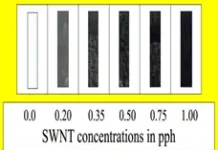By Brittany Willes, contributing writer, UV+EB Technology

“My passion is finding different ways for our planet to be sustainable,” said Matthew Pearlson, a research specialist in the Laboratory for Aviation and the Environment (LAE) at MIT’s Department of Aeronautics and Astronautics. A chemical engineer by training, Pearlson’s specialty is renewable fuel and alternative energy systems. “I spent 10 years working on fuels for commercial aircrafts, finding ways to replace jet fuel with something more sustainable,” he explained. “Eventually, I realized that even if we are wildly successful with producing renewable fuels – which is technically possible and, economically, have certain markets where they will perform well – it will not matter. We just use too much fuel to try and replace it.”
With this realization, Pearlson decided to shift his focus to lightweighting technology. “When parts are lightweight, some interesting things happen,” he said. For instance, reduced vehicle size means reduced engine size, which means a smaller fuel tank or battery. At that point, the frame can be made lightweight as well. “I found the whole process of lightweight fascinating, and I started thinking about what I could do in the next few years to bring technology to market that could one day make the world lighter weight.”
Pearlson’s interest in lightweighting led him to learning about and exploring 3D printing technology – specifically a method of printing called stereolithography, which utilizes UV to cure the layers. What was appealing about this technology was the ability to produce parts that you would never know weren’t injection molded. With this method of printing, it was possible to produce functional parts for vehicles while still retaining the quality of injection molding.
“Most 3D printing technologies produce what’s called a “near net shape,” which then requires post-processing such as sanding or sandblasting to smooth out the surface,” said Pearlson. “With stereolithography, that’s not necessary. The part is printed, washed, cured and it’s ready to go.”
For Pearlson, this technology had definite potential, and he had the idea to 3D-print carbon fibers where the fibers were suspended in the resin, resulting in ultra-light weight, ultra-strong composite parts. Of course, Pearlson encountered some challenges along the way.
“I ran into problems trying to get the carbon fibers to line up properly,” he said. “I decided to just take the carbon fibers out and focus on the foam.” This is what led to “The Foam Printing Project” – an advancement in foam resin technology that goes a long way toward Pearlson’s passion for lightweighting the world.
“My invention takes the resin and tweaks it a little bit,” he explained. “Gas is added to the resin to create a foamed version of that resin that can then be used for printing. When I’m talking about foam, I don’t mean foam like in a bubble bath. It’s more like latte foam, where the bubbles are so small you can’t see them. If you’ve ever seen the designs coffee houses can paint into the foam, you know it’s possible. With “The Foam Printing Project,” it’s all about solidifying the liquid foam to a solid using UV lasers or electron beams or even UV-DLP projectors. Basically, I’m taking cream cheese and making it whipped cream cheese.
Pearlson’s foam resin technology has significant advantages when it comes to lightweighting heavy-duty industries, such as aerospace and automotive. For example, automotive companies already make use of 3D printing technologies when it comes to building concept cars. By using foam resin, the resin itself becomes four times lighter because 75 percent of it is air. This means using 75 percent less resin. According to Pearlson, a gallon of resin can be turned into four gallons of foam, making it 75 percent cheaper to use than traditional resin.
This is particularly important considering that injection-molded foam parts have traditionally been very expensive and time-consuming to produce. Take, for example, an aerospace company needing to make a nose cone for a specific drone. If the foam part needs to be changed at any time, there are two options: spend another $100,000 and six months to build a new tool or take an X-Acto knife to the original foam part.
“I have a nose cone part for a UAV drone,” stated Pearlson. “The company designed, engineered and tooled it and started making foam nose cones with it. Then the engineers wanted to change the payload. The project manager said ‘There’s no way we’re doing this again. We don’t have the time or the money,’ and he handed the engineers an X-Acto knife. With my technology, I can print an on-demand, mission-specific nose cone in a fraction of the time. All the things we talk about with additive manufacturing, everything that is gained with it, that’s what The Foam Project provides.”
Given the advantages his foam resin provides, it’s little wonder Pearlson opted to submit it to RadLaunch 2018, the new idea accelerator for UV/EB technology start-ups, students and innovators.
“Early on in my research, I was introduced to Colorado Photopolymer Solutions and Vice President Mike Idacavage. He was the one who first told me about the RadLaunch opportunity and encouraged me to apply,” said Pearlson, whose technology was selected to be part of the first RadLaunch “class.”
“I want to shout from the mountaintops that this technology can change the world, and RadLaunch gives me that opportunity,” he continued. “I want as many people to know about it as possible, so when they encounter problems they think ‘I should work with Matthew to solve this with his Foam Printing Project.’ It’s been a bit of a twisted path to get here, but I’m excited to bring this technology to market. My long-term vision is to continue developing this technology to help lightweight the world. Imagine what the world would be like if we made things lighter, more affordable and more sustainable.”






